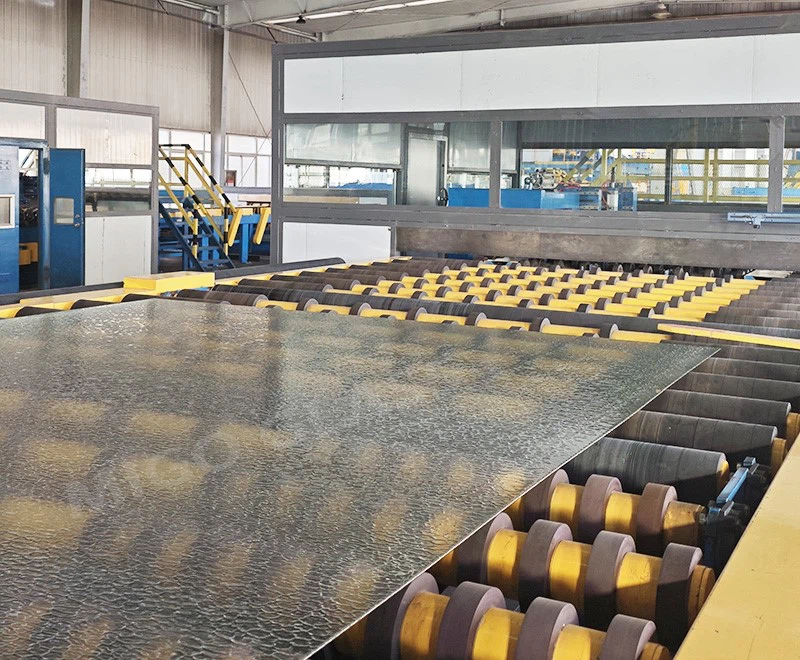Patterned glass, also known as textured glass, is widely used in architecture, interior design, and furniture due to its aesthetic appeal and light diffusion properties. At MIGO GLASS, we specialize in high-quality embossed glass production, ensuring precision and consistency throughout the manufacturing process. Here's an overview of how patterned glass is made:
1. Raw Material Preparation
The process begins with high-purity silica sand, soda ash, limestone, and other raw materials. These ingredients are carefully measured and mixed to achieve the desired glass composition.
2. Melting and Refining
The raw materials are fed into a furnace and heated to approximately 1,600°C. This intense heat melts the batch, forming a homogenous molten glass free of bubbles and impurities.
3. Forming and Rolling
The molten glass flows onto a metal or ceramic roller with a specially designed texture. As it passes through the rollers, the desired pattern is imprinted onto the surface of the glass while controlling its thickness.
4. Annealing
The patterned glass then moves through an annealing lehr, a temperature-controlled tunnel that gradually cools the glass. This process relieves internal stress, enhancing the glass's strength and durability.

5. Cutting and Quality Inspection
Once the glass has cooled, it is cut into sheets of the required size. Each sheet undergoes rigorous quality checks, including thickness verification, pattern consistency, and defect detection.
6. Surface Treatment and Packaging
Depending on the application, additional treatments such as tempering, laminating, or frosting may be applied. Finally, the glass is securely packaged for transportation to customers worldwide.
MIGO GLASS is committed to producing high-quality embossed glass that meets international standards. Whether for decorative or functional use, our embossed glass provides elegance and privacy while maintaining durability.
For more details or inquiries, contact us today!






